
Temperatures have fallen this week, with many parts of Britain waking up to the first frost of the year. But can you save a plant that has been exposed to frost?
In an ideal world you would have been busy prepare your garden for winter And hibernate your plants in time for the first layer of frost. But we know this isn’t always the reality – in fact, one of the most common hibernating faults fails to protect your plants in time.
So that brings us back to the big question: Can you save a plant that has been exposed to frost?
We reached out to garden experts to find out if you can bring a frozen plant back from the brink of death.
Can you save a plant that has been exposed to frost?
So you woke up to frozen plants. What now? Well, it depends type of plants, for starters.
‘Tender plants with frost damage are much less likely to survive and will probably need to be replaced, while hardy perennials should survive frost,’ he explains. Morris Hankinsonfounder of Hopes Grove Nurseries. ‘As long as the roots are not damaged, the plants will grow again.’
If you’ve done your research whether perennials need to be protected against frostyou probably know the difference between hardy and soft plants.
Fortunately, there is an easy way to check how strong your plants are.
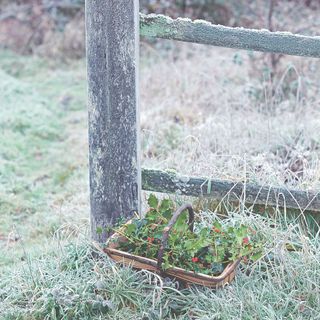
(Image credit: Future PLC/Annaick Guitteny)
“Always check the hardiness of your plant,” says Chi Chi Dunford, head vegetable gardener at Sculpture at the lakes. ‘You can find a temperature guide and hardiness ratings at the RHS websiteand then you know whether you can leave them in the garden all year round, or only during the summer months.’
What does this mean for plants exposed to frost? “If the growing point is not damaged by frost, there is a chance that it will grow back when the temperature is good for growing again,” Chi Chi explains.
 Chi Chi Dunford
Chi Chi Dunford
Social links navigation
Head vegetable gardener
Chi Chi Dunford is head kitchen gardener at Dorchester’s Sculpture by the Lakes, an internationally recognized botanical garden. Chi Chi joined the team in 2022 and manages the park’s quarter-acre plot, where he grows fresh seasonal produce used in the on-site café, the Makers Yard Kitchen. Chi Chi holds a bachelor’s degree in forestry and resource conservation from National Taiwan University. She was also trained as a biodynamic gardener in 2008 and is currently obtaining an RHS level 3 diploma.
Plants damaged by frost
If you are sure that your plants have been bitten by frost, there is still hope. But first you need to assess the extent of the damage.
‘It is possible to save a plant that has been damaged by frost, but it will depend on the plant and how severe the damage is,’ explains Morris. ‘If there is simply some wilting due to light frost, the plant may recover (without some leaves) when the weather warms up.
‘If the plant has suffered more serious damage, it may not recover.’
Burning, darkening of the foliage and collapsed stems are all signs of more serious frost damage and can kill the plant.

(Image credit: Future PLC/Annaick Guitteny)
Sometimes you don’t know the full extent of the damage until spring.
‘If it is a plant suitable for growing outdoors all year round, wait until spring to see if new shoots emerge,’ advises Chi Chi. ‘If it is a delicate plant that can only go outside in the summer, you can put it inside to see if it will grow again. After you see the new growth, you can cut away the dead part.”
It may seem like the best idea to remove damaged parts of the plant as soon as you notice them, but it is important to wait until spring before pruning. Pruning your plants before the last frost can make them even more vulnerable, and the extent of the damage will become more apparent in the spring.
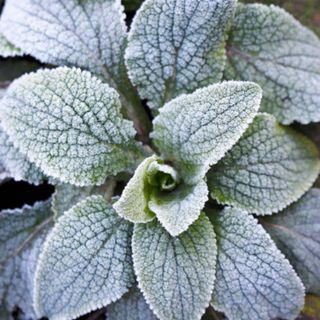
(Image credit: Future PLC/Annaick Guitteny)
Morris recommends some protective aftercare measures to limit the damage.
“Allow frozen plants and their soil to thaw before watering,” he says. ‘It can be useful to place some horticultural fleece over the tops of frozen plants if they are in pots or in the ground.’
Can you save a plant that has been exposed to frost? It all comes down to the type of plant you grow and the extent of the damage.
As always, prevention is better than cure, so it’s important to learn how to protect plants from frost in the first place. Fortunately, there is still time to stock up on frost protection equipment…
Essential protection against frost
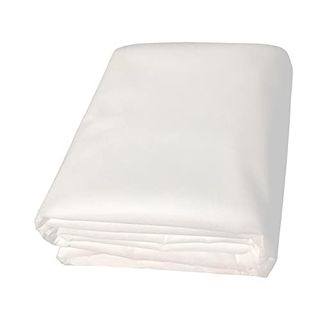
Heavy garden fleece
Heavy horticultural fleece for packaging potted plants.
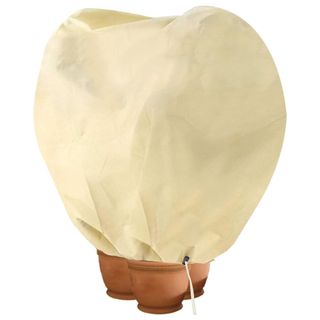
Hydrogarden plant fleece jacket
Handy fleece plant jackets to protect less hardy plants.
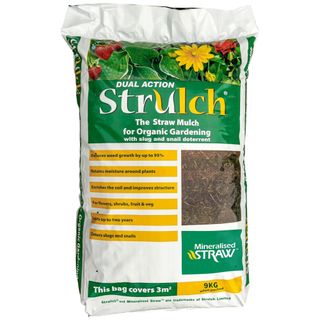
Strulch Mineralized Straw Mulch 100l
Nutrient-rich mulch to protect plant roots.
Frequently asked questions
Should I cut off frost damaged leaves?
If frost has damaged the leaves of your plants, your first instinct may be to prune them away. But don’t jump the gun.
“If it is a plant suitable for outdoor growing in your area, leave the damaged leaves for winter protection until spring,” advises head kitchen gardener Chi Chi. ‘As new growth begins, you can prune away the dead parts.’
If the affected plant is tender and needs a frost-free or heated greenhouse to overwinter (you didn’t quite have it there yet), the rules are slightly different.
“Cut off the damaged leaves and wait until spring to see if there is any sign of new growth, then cut away the dead stems,” says Chi Chi.
Can you bring a plant back after it has frozen?
It all depends on the degree of damage. If the leaves are frozen and the plant is relatively hardy, there is a chance that you can save it by pruning away the damaged parts in the spring. If the entire plant is frozen, especially the roots, it is probably gone for good. But again, that depends on the hardiness of the plant you are growing.
Close the hatches with some horticultural fleece before it’s too late!
Leave a Reply